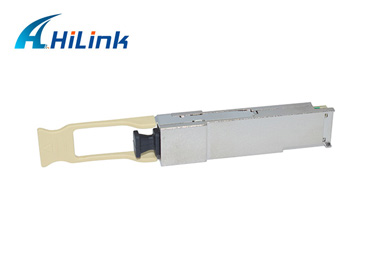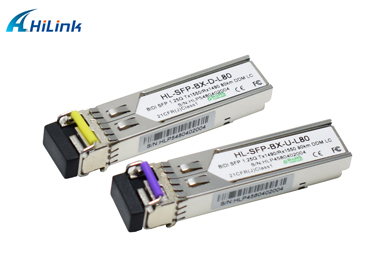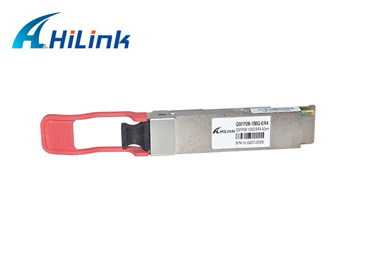How Much Do You Know About Telecom Hardware?
Jan. 11, 2023
People often have misconceptions about devices such as network interface cards, transceivers, modems, and media converters in the telecoms sector. Some people don't even know how to use them properly. In fact, all these devices have different functions. For example, a network interface card connects your computer to a local data network or to the Internet. A transceiver is responsible for acquiring digital data represented by a series of zeros and ones. The modem takes the digital zeros and ones and converts them into analog sound. As the name implies, media converters are usually used to convert one media type to another. To learn more about how they perform, take a look at the following article.
Network Interface Cards
As mentioned earlier, a network interface card (NIC) is used to connect your computer to a local data network. It acts as an intermediary between the computer and the data network by converting computer data into electrical signals. The Ethernet NIC is an indispensable transmission medium for Ethernet networks. Please note that we need to select the correct network adapter that matches the transmission medium and network architecture to which we want to connect. Today, most computers come with built-in network adapters, the most popular of which are Ethernet NICs.
Optical transceivers
In an Ethernet network, the transceiver is primarily used to convert digital signals into electrical, radio, or optical signals by means of a coding scheme. This method uses the numbers 0 and 1 to represent the voltage. 0 may represent zero voltage on a wire, while 1 may represent a positive voltage. With this method, the optical technician can easily understand the performance of the transceiver. An older transceiver is simply an adapter that takes digital signals from the AUI port at one end and then converts these signals to electrical signals using an RJ45 or another port. In addition to this transceiver type, there are several new types that will be described below.
SFP modules
SFP stands for Small Form Factor Pluggable and is commonly used in switches and routers to easily modify the media type used by the port.SFP modules are one of the common types of optical transceivers in use today, especially for Gigabit Ethernet applications. The port accepts SFP modules in addition to the previous devices with a fixed media type. Therefore, to change the media type, we can simply insert a different SFP module. For example, we can get SFPs that support copper or different sizes of fiber.
1.25G BIDI SFP 80KM
GBIC
The GBIC (GigaBit Interface Converter) module is an older transceiver module that is slightly larger than the SFP but has the same functionality. the GBIC is a larger size transceiver that can be installed in a port slot for gigabit media, including copper and fiber. In addition to the GBIC and SFP (or mini-GBIC), we should also mention an XFP transceiver, which is similar in size to the SFP, but for 10 Gigabit networks. There are also QSFP+ modules for 40 G Ethernet and CFP or QSFP28 for 100 G infrastructure.
Modems
Optical modems are mainly used to convert electrical signals to digital signals by means of coding schemes. The modem takes a digital zero-sum and converts it into an analog sound signal that can be transmitted over a telephone line. The modem is actually an acronym meaning modulator and demodulator. The modulation occurs at the transmitter side, converting the binary data into an analog wave, while demodulation occurs at the receiver side, converting the analog wave back into binary data. Note that there is a coding scheme that recognizes when a signal represents a 0 or a 1 and that the network adapter must match the architecture and transmission medium being used.
100G 40KM QSFP28 ER4
Media converters
Media converters are usually used when you need to convert from one media type to another, for example from copper to fiber and vice versa. Let's say you have an Ethernet network using copper cables, but we have a server with a fiber network adapter card. In this case, we can use a fiber to Ethernet copper media converter. But one thing you should remember is that the media converter works in the same network architecture. This means that the media converter can convert from one type of Ethernet to another using a different transmission cable, but it cannot be used to convert from something like Ethernet to a different network standard.
In order to complete the conversion process from one architecture to another, the contents of the Frame need to be modified to modify the Data Link layer address. Media converters operate at the physical layer because they simply convert signals from one encoding scheme to another. However, the Media Converter does not read or modify the MAC address.
Conclusion
At the end of this article, you may have a basic understanding of the above devices. These devices have unique properties and play an important role in the telecommunications sector. It is important that the correct equipment is selected for the telecoms sector and mixing is prohibited. Therefore, if you are unsure how to use them, seek advice from an expert.
Hilink is specialized in fiber optical products and networking solutions. Our main products are transceiver modules such as QSFP, QSFP28, CWDM/ DWDM SFP/XFP. If you need our expert advice, you can visit us directly at https://www.hilinktech.com.














